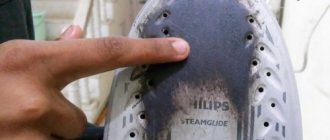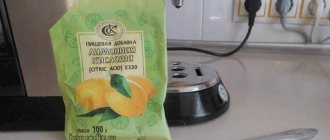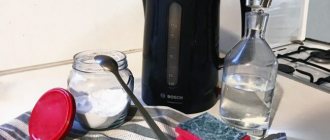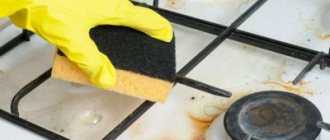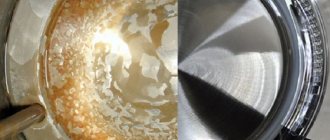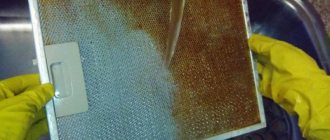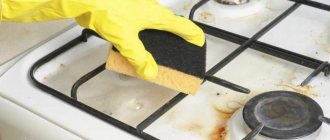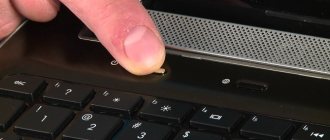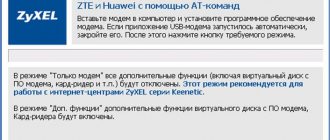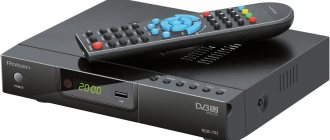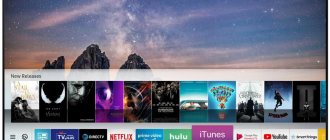While using applications on the Android OS, the internal storage is gradually filled with temporary files - logs, image thumbnails, advertising data, etc. Sometimes, the total volume of temporary files reaches 2 GB, which leads to a noticeable slowdown of the system. In this article we will talk about five ways to clear the cache on an Android phone or tablet.
Method 1: Built-in cache clearing
In Android version 5.0 and higher, there is a built-in tool for quickly clearing the entire cache in the phone's memory. To clean, you will need to do the following:
Open the settings section.
Next, go to the “Storage” section. In your case, the name of the item may not match.
Then select the internal storage medium.
An analysis of the occupied space will begin. On low-power devices, analysis time sometimes reaches 2-3 minutes.
Click on "Cache Data".
In the next window, confirm the cleaning. Another 1-2 minutes and the cache is completely cleared.
The convenience of the method is the absence of additional tools and applications to clear the cache. The method is also simple, which any novice Android user can handle. The disadvantage is that you cannot view or mark the data which should be deleted and which should be left.
Method 3: Third Party Tools
Most Huawei smartphones for the foreign market are still based on Android, and therefore you can use the appropriate third-party program to clear the cache. The most convenient of these is CCleaner, which we will use.
- After running the solution for the first time, grant it all required permissions.
- The main menu will appear, use the large “Quick Clean” button.
- O and “Visible cache”, then click “Finish cleaning”.
- Wait for the operation to complete.
- After the completion message, close the application. It is recommended to repeat the cleaning procedure approximately once a month.
SeaCleaner is a more advanced and reliable version of the corresponding option in Phone Manager, but some users may be put off by the presence of advertising.
Method 2: Built-in apps to clear cache
In smartphones with a third-party design, such as Xiaomi or Huawei, which use the MIUI and EMUI shells, clearing the cache is implemented using a built-in application. For example, in MIUI such an application is called “Security”. In addition to antivirus and viewing energy consumption, the application contains “Acceleration” and “Cleaning” items, where active applications are closed, as well as cache files are searched.
Method 3: Third Party Apps to Clear Cache
Third-party programs can also find and clear the cache. For a detailed list of the best cleaners, see this topic. The programs allow you to view cache files in detail, and then mark the data that needs to be deleted. In addition to unnecessary files, some utilities offer to search for duplicates, delete large files, or uninstall unused applications, which will allow you to get even more free space.
SD Maid program interface.
When to clear the cache
In some ways I agree with Ivan and with his opinion, which I cited at the beginning of the article. There is no point in clearing the cache frequently. After you clear it, the application will still create it again. Only at this time it will work even slower.
It’s important to find a balance here and understand whether your smartphone is really slowing down due to the cache or, for example, it’s just old and can’t handle it anymore. If you don’t delve into this, you can advise clearing the cache once every 3-6 months, but be prepared that the speed of operation will be slightly lower for the first few days. As a result, you will sort of refresh the application by removing unnecessary garbage and reassembling only what is needed.
Google Play sends out empty app updates. What to do?
Method 5: Factory reset
Resetting the settings allows you to clear all data from the internal storage. It is recommended to perform a reset only as a last resort, after first creating a copy of important information on a separate medium. A reset is most relevant when the internal memory is full and all user actions are processed with a noticeable delay. For more details on how to reset settings, see this topic.
Reset menu.
Conclusion
The methods described above show in detail how to clear the cache on Android. It is recommended to perform cleaning 1-2 times a month when you need to free up an additional 1-2 GB of internal space, or if the performance of your smartphone/tablet has decreased.
For novice users, methods with built-in cleaning or a built-in application are suitable. It's also worth considering third-party cache clearing apps. Manual search is recommended only for advanced or experienced users to prevent accidental deletion of important information. Resetting settings is indicated in extremely advanced cases when the smartphone/tablet is slow.
Was the article useful to you?
Rate it and support the project!
( 9 ratings, average: 4.00 out of 5)
All applications native to Andro >
Yes, from time to time you have to clear the cache, but it is not necessary to do this constantly, and especially every day. Let's figure out what it is, why it is needed and in what cases it needs cleaning. We will also find out how to clear the cache on different versions of Android and on smartphones of different brands using the system and third-party utilities.
How to clear memory using programs
Manual revision brings results, but it is not always justified, especially if the saved components take up dozens of GB. Today there are many specialized software that scan memory, clear garbage, cache, duplicate files, unsuccessful frames, programs that a person has not opened for months. Their advantages are obvious:
- the program is intuitive and has a pleasant interface;
- does not take up much space;
- free;
- does everything automatically without human intervention;
- It is possible to set a regular schedule for screening the contents of the media pad.
Why the sensor does not work on Honor and Huawei: reasons, how to fix it?
The most popular in this area are Clean Master, SD Maid, Epp Cash Cleaner. All of them can be found on the official websites of the developers or in the licensed software store for the Android OS - Google Play.
Clean Master
If the device begins to freeze and slow down, then this is a clear sign of the need to use Clean Master. Download, open, and run deep cleaning. After completing the screening, confirm the removal of malicious components.
If you have any questions or complaints, please let us know
Ask a Question
SD Maid
SD Maid performs a comprehensive system cleaning and analyzes the internal space for viruses. The set of tools that the developers provide will help you administer files of any type.
App Cache Cleaner
The program not only cleans unnecessary files, but also clears the cache both in applications and in the browser. However, if you have an Android older than the sixth version, then you do not need to download App Cache Cleaner - it has a built-in version. But for older models this software is perfect.
What is cache and when should it be cleared?
Operating system and application caches are files or folders that temporarily store data that a program or OS uses most frequently. In short, this is a place where you can quickly get the information you need without having to go to the source of its permanent storage.
The cache is an accelerator for the launch and operation of applications. Take a browser, for example: when you first visit a web page, it downloads some of the content to the device (in the cache) to reduce the time it takes to open it the next time you visit. Or a player: smooth playback of audio and video is ensured by preloading this data into the cache. It’s the same in other programs: if, when you start the application, it automatically opens the file that you worked with last time, it means that the cache helped it - it saved information about it.
Errors sometimes occur while programs are running. If the error is stored in the cache, the application will replay it over and over again until the cached data is cleared. This is the first situation where clearing the cache is justified and brings real benefits.
In what other cases is it advisable to clear the cache:
- If cached data takes up too much space in the device's memory and this creates difficulties when opening content, launching or installing applications.
- If you want to maintain the confidentiality of the information you worked with.
- If the data that the program loads from the cache is out of date.
Deleting cached data may not harm the system or programs, but it may slow them down until the cache is full again. Therefore, daily cleaning of this area just to speed up the device is completely pointless, as it has the opposite effect.
How to clear internal memory on a Huawei tablet manually
Internal memory consists of user and system files. This is all that is downloaded and deleted. There are several options to help clear the memory on your Huawei tablet:
- cleaning browser contents;
- sending to the trash those programs that you have not used for a long time;
- removal of clone components and unsuccessful pictures, clean video gallery and music player.
Removing junk in the browser
Let's start with the simplest thing - removing garbage from the search engine. Each user has a pre-installed browser. The most common are Chrome and Yandex, so we’ll tell you how to do this using their example:
- open the search engine;
- click on the three dots (Chrome has them at the top, Yandex has them at the bottom), these are the settings;
- there select “History”;
- click on the “Clear history” item;
- In the list that appears, it is important to select the items that require cleaning.
Often the application offers to delete the following sections:
- browser history;
- cookies and site information;
- images and other components stored in the cache;
- sites with saved passwords;
- autocomplete information;
- setting up sites.
How to turn off sleep mode on a Huawei tablet - step-by-step guide
Check off everything that needs to be sent to the cart and confirm the action.
Uninstalling apps
If you analyze the statistics of different users, then it is definitely possible to say that most of the disk space is occupied by programs. These are system utilities, games, entertainment software, social networks and instant messengers. There are probably some that you have downloaded but don’t use, or open very rarely. They take up quite a lot of space, which significantly slows down the operation of the device. Removing them will help the tablet “breathe out” and work easier. Conduct an audit in the “All programs” column and get rid of the junk. Also, ensure that your current utilities are up to date to optimize your device's performance.
Cleaning up unnecessary files
Among the trash there are not only programs, but also ordinary files - videos, music, pictures. This is all located in the explorer or the corresponding blocks. Come in, check the availability of materials, and delete those that you will not use. You should add to cart:
- duplicate screenshots or photographs;
- bad shots;
- music that you haven’t listened to for a long time;
- videos that you simply store on your phone.
Often, users do not clean their tablet because they are afraid of losing important pictures or memorable videos. For this purpose, there are many cloud storage services that provide several gigabytes of storage space to all registered users. The most popular are Google.Disk or Yandex. Disk.
How to clear cache on Android 6, 7, 8, 9
General (system)
The method for deleting the Android system cache of all current versions (without proprietary shells of gadget manufacturers) is approximately the same. The menu appearance on your device may differ slightly from that shown in the screenshots below, but the essence of the technique does not change.
- Go to the system settings (parameters) of your smartphone or tablet and find the “Device” section. Open the “Memory” (Storage) subsection.
- In the list of objects saved in the device’s memory, find the “Cache Data” item and tap it. In the “Clear cache?” dialog box that opens next, select OK.
Separate application
Clearing the cache memory of an individual application - both a system one, like the Google Play Store, and a user one - is performed in the same way.
- Open System Preferences (Options). Find the “Applications” subsection in the “Device” section and enter it.
- Tap the line with the selected program to open its properties.
- Click the "Clear cache" button.
Mobile browser
You can clear your browser cache using the method above as it works for any application. But most mobile web browsers have their own temporary data removal tools that do this more selectively and accurately. Each browser has its own set and location of cleaning tools, so it’s impossible to provide general instructions. However, once you figure it out in one application, you can do it in another.
Let's look at clearing the cache and cookies in the IceCat mobile browser (Firefox version).
- Open the browser's main menu and go to settings. Select "Delete my data".
- Check the items you want to clear (cookies, active sessions, and cache) and tap the Clear Data button.
System partition from the Recovery menu
If the device boots too slowly or errors occur during startup, clearing the system partition cache from the Recovery menu often helps solve the problem. To access this menu, turn off the device, then press and hold the Volume Up and Power buttons. On some models, you must additionally press the hardware Home button.
The cache clearing option is called Wipe Cache Partition. To navigate through the menu, use the volume up and down buttons. To confirm your choice, use the power button.
Clearing browser memory
Saved data in the browser memory also greatly clogs up the tablet's RAM. As a rule, it saves your browsing history. This is done simply using the built-in browser functions:
- First you need to go to the settings of the browser itself.
- Select the “History” tab.
- Specify the period for which the received information should be deleted, and also determine whether it is necessary to leave what data, for example, logins, passwords, images.
- Click the “Clear history” button.
It is recommended to carry out this cleaning regularly. The frequency depends on how actively you use the browser.
Important! If selectively clearing the browser memory did not help to cope with the program slowdown, then you should completely delete all saved data.
Clearing cache memory on smartphones and tablets of different brands
On devices where the manufacturer's proprietary shell is installed on top of Android, the function of deleting cached data is sometimes implemented non-standardly.
- To clear the system cache on Samsung Galaxy , use the Wipe Cache Partition option in the Recovery menu. Samsung Galaxy application data is deleted through their properties, as in the instructions for Android without add-ons.
- To delete cached data from a specific program on Huawei Honor , launch the system settings utility, open the “Applications and notifications” section, and then “Applications”. Find the program you need and go into its properties. Go to the "Memory" section and click "Clear cache".
- Clearing program cache memory on the Asus ZenFone is done in much the same way as on Honor: go to settings, then to the “Applications and notifications” section and the “Application information” subsection. Tap the line with the name of the desired program. In properties, select "Storage and memory" and click "Clear cache".
- Removing the system cache on Meizu is done through the “Storage and Backup” - “Junk Cleanup” section. Or using the built-in Security utility.
- On Lenovo , BQ , Prestigio , Fly , Xiaomi, deleting cached data is carried out in the same way as on pure Android.
And, of course, a device of any make and model can be cleaned and optimized using third-party utilities.
Methods
You can clean the device yourself using built-in or third-party programs. If you do not take into account cleaning media files, then applications will cope with this task better.
Manually
Using the settings (to remove applications), file manager or computer (to remove other files). When cleaning, you need to carefully review each folder.
If files with an unknown purpose are found during the process, it is better to leave them so as not to disrupt the functionality of the device.
Special Applications
On almost every Android device, the standard application package includes cleaning software. However, you don’t have to limit yourself to just that. There are enough paid and free programs that perform an alternative function.
The most popular of them:
- CCleaner;
- Clean Master Lite;
- Solo Cleaner;
- History Eraser;
- Power Clean;
- Smart Booster.
Method 1: Built-in cache clearing
In Android version 5.0 and higher, there is a built-in tool for quickly clearing the entire cache in the phone's memory. To clean, you will need to do the following:
Open the settings section.
Next, go to the “Storage” section. In your case, the name of the item may not match.
Then select the internal storage medium.
An analysis of the occupied space will begin. On low-power devices, analysis time sometimes reaches 2-3 minutes.
Click on "Cache Data".
In the next window, confirm the cleaning. Another 1-2 minutes and the cache is completely cleared.
The convenience of the method is the absence of additional tools and applications to clear the cache. The method is also simple, which any novice Android user can handle. The disadvantage is that you cannot view or mark the data which should be deleted and which should be left.
Method 2: Built-in apps to clear cache
In smartphones with a third-party design, such as Xiaomi or Huawei, which use the MIUI and EMUI shells, clearing the cache is implemented using a built-in application. For example, in MIUI such an application is called “Security”. In addition to antivirus and viewing energy consumption, the application contains “Acceleration” and “Cleaning” items, where active applications are closed, as well as cache files are searched.
Method 3: Third Party Apps to Clear Cache
Third-party programs can also find and clear the cache. For a detailed list of the best cleaners, see this topic. The programs allow you to view cache files in detail, and then mark the data that needs to be deleted. In addition to unnecessary files, some utilities offer to search for duplicates, delete large files, or uninstall unused applications, which will allow you to get even more free space.
SD Maid program interface.
What is cache?
Every phone has a folder with temporary files. This can include a variety of settings information, reports, and other application data.
For example, you decide to log into the VKontakte social network through a browser. You may have to wait a little the first time until all the images on the site are loaded. In the future, the startup process will become faster.
Why? Because copies of all site images will appear in the temporary folder, so that loading at the next login will be carried out at an accelerated pace. There is also traffic savings. But, if the user decides to delete the application from the phone, then the previously saved files in the cache folder will definitely remain in the memory. Where it leads? The more applications the user downloads and then deletes, the more space will be occupied by temporary files. How to solve this problem? It is enough to clear the cache.
How to clear internal and RAM memory of Honor and Huawei phones
Method 5: Factory reset
Resetting the settings allows you to clear all data from the internal storage. It is recommended to perform a reset only as a last resort, after first creating a copy of important information on a separate medium. A reset is most relevant when the internal memory is full and all user actions are processed with a noticeable delay. For more details on how to reset settings, see this topic.
Reset menu.
